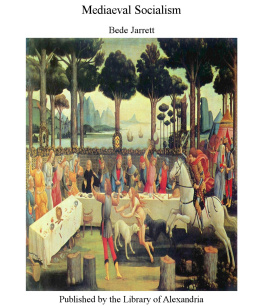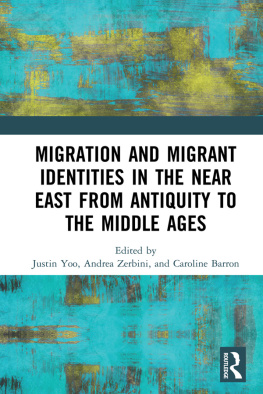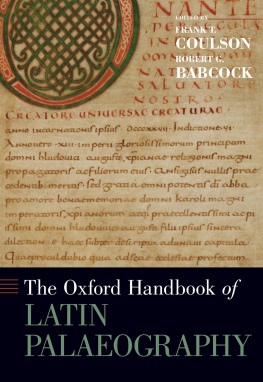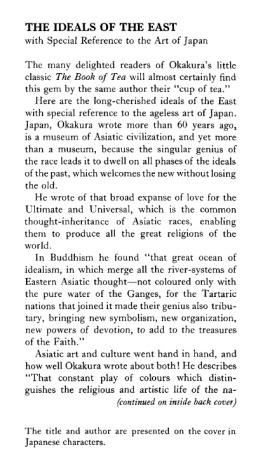First published in 1888 by
Routledge, Trench, Trbner & Co Ltd
Reprinted in 2000 by
Routledge
2 Park Square, Milton Park, Abingdon, Oxon, OX14 4RN
Transferred to Digital Printing 2007
Routledge is an imprint of the Taylor & Francis Group
1888 E Bretschneider
All rights reserved. No part of this book may be reprinted or reproduced or utilized in any form or by any electronic, mechanical, or other means, now known or hereafter invented, including photocopying and recording, or in any information storage or retrieval system, without permission in writing from the publishers.
The publishers have made every effort to contact authors/copyright holders of the works reprinted in Trbner's Oriental Series. This has not been possible in every case, however, and we would welcome correspondence from those individuals/companies we have been unable to trace.
These reprints are taken from original copies of each book. In many cases the condition of these originals is not perfect. The publisher has gone to great lengths to ensure the quality of these reprints, but wishes to point out that certain characteristics of the original copies will, of necessity, be apparent in reprints thereof.
British Library Cataloguing in Publication Data
A CIP catalogue record for this book
is available from the British Library
Mediaeval Researches from Eastern Asiatic Sources
ISBN 0-415-24486-2
China: 5 Volumes
ISBN 0-415-24287-8
Trbners Oriental Series
ISBN 0-415-23188-4
ISBN 978-1-136-38056-3 (ePub)

TRBNERS
ORIENTAL SERIES.
MEDIVAL RESEARCHES
From Eastern Asiatic Sources.
FRAGMENTS TOWARDS THE KNOWLEDGE OF THE GEOGRAPHY AND HISTORY OF CENTRAL AND WESTERN ASIA FROM THE 13th TO THE 17th CENTURY.
BY
E. BEETSOHNBIDEE, M.D.
LATH PHYSICIAN TO THE RUSSIAN LEGATION AT PEKING;
MEMBER CORRESP. DE L'INSTITUT DE FRANCE
(ACADMIE DES INSCRIPTIONS ET BELLEN LETTERS).
VOL. II.
WITH A REPRODUCTION OF A CHINESE MEDIVAL MAP OF CENTRAL AND WESTERN ASIA.
LONDON
KEGAN PAUL, TRENCH, TRBNER & CO. LTD
BROADWAY HOUSE: 68-74 CARTER LANE, E. C.
AN interesting specimen of medival cartography, showing the geographical knowledge possessed by the Chinese (or rather Mongols), in the thirteenth and fourteenth centuries, of the countries west of China and Mongolia, has come down to us in the form of a rude map which has survived from a large work treating of the institutes of the Mongol empire and published in the first half of the fourteenth century. The title of this extensive work was King ski ta tien; but it seems that now only fragments of it exist. The library of the Russian Ecclesiastical Mission in Peking was in former times in possession of a manuscript copy of one chapter of the work, containing an enumeration of the stations on the post-roads in China Proper and a part of Mongolia. This now belongs to the library of the Rumiantsoff Museum at Moscow.
This Chinese medival map, which may serve as a pendant to the curious Catalan map of the year 1375, reproduced, as far as Asia is concerned, in Yules Cathay, bears the title Yan King shi ta tien si pei pi ti li tu, or Map from the King shi ta, tien of the Yan dynasty, representing the countries to the north-west (of China Proper). I have seen two copies of it. One of them, in the library of the Russian Mission, was made, as the late Archimandrite Palladius informed me, from the original in the Chinese Imperial Library. Palladius, in his translation of Chang Chuns travels, reproduces this map in Russian spelling, without however venturing any identification of the geographical and other proper names found in it. The other
More than a hundred names of places and countries of Central and Western Asia, and even Eastern Europe, appear on our Chinese medival map in Chinese characters; and we shall see that almost all these names can be easily identified with geographical names occurring in the writings of the Mohammedan authors of that period, or in the narratives of European medival travellers through Asia.
At the end of the geographical part of the Yan shi, in chap. xliii., there is an appendix entitled Si pei ti, i.e., the countries to the north-west (of China Proper) It consists of an enumeration of countries and places. Occasionally some descriptive details are added. Even a superficial comparison proves that the Si pei ti and the ancient map from the King shi ta tien correspond, the former being a list of the countries and places marked on the map. There are, however, in the Si pei ti some names of places which are omitted from the map; and a few names appearing on the map are not found in the text of the Si pei ti.
The map of Central and Western Asia from the King shi ta tien seems to be the oldest Chinese cartographical
The Chinese medival map on which we are now about to comment, although very interesting as an ancient document, has no high claim to correctness and completeness. At first sight it is even difficult to realise that a geographical map (in our modern Western sense) has been intended. We find no rivers, lakes, or mountains marked. The whole sheet appears covered by regular squares formed by straight rectangular lines. Each side of these squares seems to represent 100 Chinese li. Some of the squares contain Chinese characters, names of countries and places. Besides the above-mentioned straight (fine) lines, we observe on the map also some thicker lines, stretching irregularly, and intended evidently to mark political divisions. Thus the map appears divided into three parts, each of the parts being provided with a denomination in large characters. In the same way the list of geographical names in the











